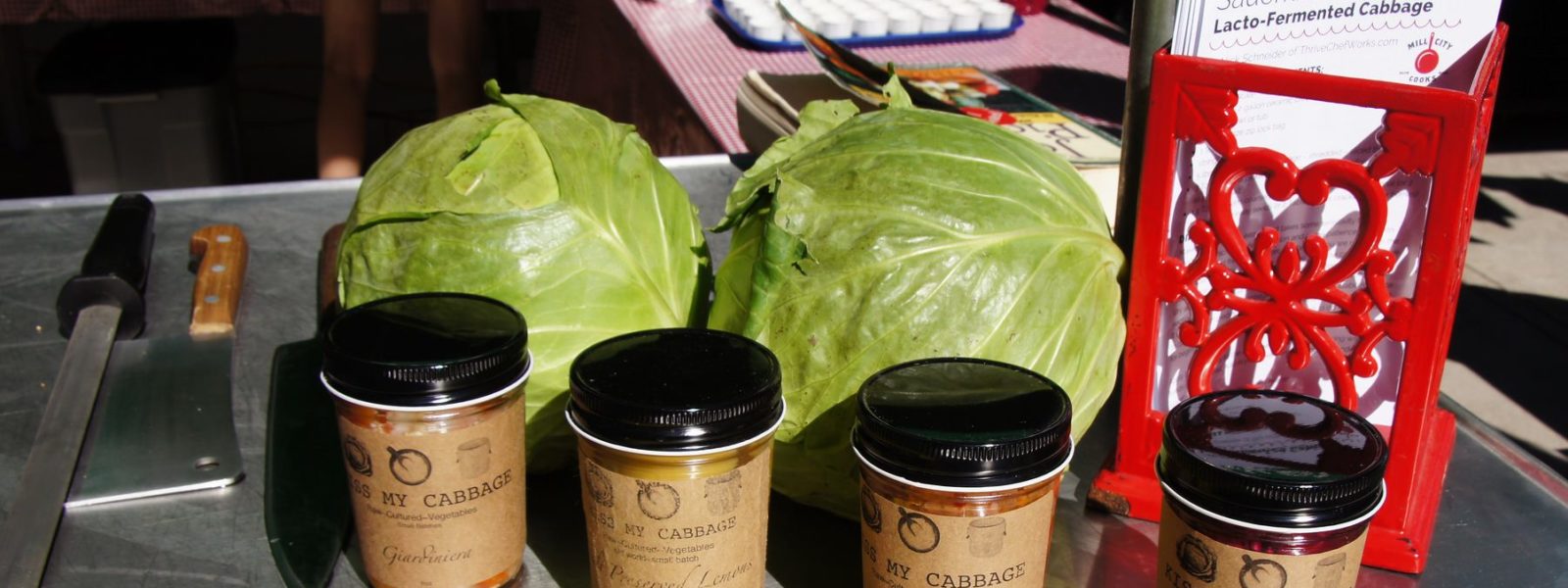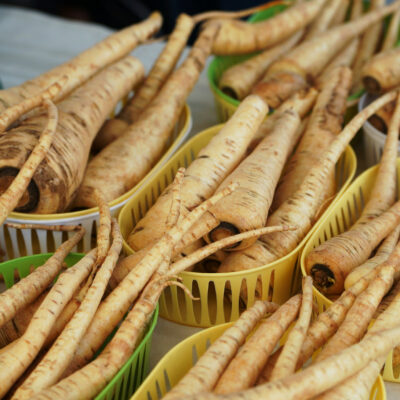Sauerkraut: Traditional Lacto-Fermented Cabbage
By Nick Schneider
Ingredients
- 5 lbs of green or white cabbage, shredded/sliced thin
- 3 Tablespoons pickling salt–a special salt of uniform density, labeled as pickling salt.
- 1.5 Tablespoons coarsely cracked coriander seeds – optional (or 2 teaspoons caraway seeds or 2 Tablespoons cracked juniper berries)
Supplies
- kitchen scale
- 1 large 1-2 gallon ceramic crock or glass jar
- 1 large bowl or tub
- gallon size zip lock bag, tea cloth and string.
Instructions
Cut the cabbage into quarters and remove the section of the core. With cabbage on one flat side (i.e. stabilized) slice it thin in 1-2 inch pieces. Weigh the cabbage in order to make the salt to cabbage ratio – this is crucial and very difficult to do without a scale for beginners.
Apply the salt evenly to the cabbage by tossing and mixing with your hands in the big bowl. Add in your seasoning if using (coriander, juniper, caraway)
Transfer the cabbage to the clean fermenting vessel and press it in to the vessel using fists. As you press it down you should see the juices from the cabbage build up. Ideally the cabbage juice will be enough liquid to cover the cabbage during fermentation. If the cabbage is not submerged beneath some liquid it will attract mold. If the cabbage has not released enough liquid to cover itself in 2-3 days then add some brine to cover it: 1.5 Tablespoon pickling salt to 1 quart of spring/filtered water.
It is common to use a plastic zip lock bag filled with water (or bring 1.5 Tablespoon to 1 qt water, in case the bag breaks) as a press to seal the air out and keep the cabbage under a brine solution. Another possibility is a glazed plate fit into the vessel that can then be weighted with a clean rock or large jar filled with water. A cloth or pillowcase should be used to cover the opening completely. This keeps out dust but more important flies that are attracted to the fermentation. Secure it with a string or rubber band.
Store the ferment in a dark, cool place. The ideal temperature range is 60-65 F, which would take around 3-4 weeks to complete. This is a little subjective because if you want it more sour you let it go a little longer. During the summer months when basements are 70 F at a minimum the fermentation can take as little as two weeks, so check on it regularly. Bottom line – in summer it goes fast and in winter it can take much longer, but the flavor of a slow ferment is usually more complex.
After the fermentation is done, storing the sauerkraut in the fridge for another 1-2 weeks will affect the flavor positively. This rounds out the flavor and sweetens the cabbage a little. After that it can store in the fridge for a long time.






